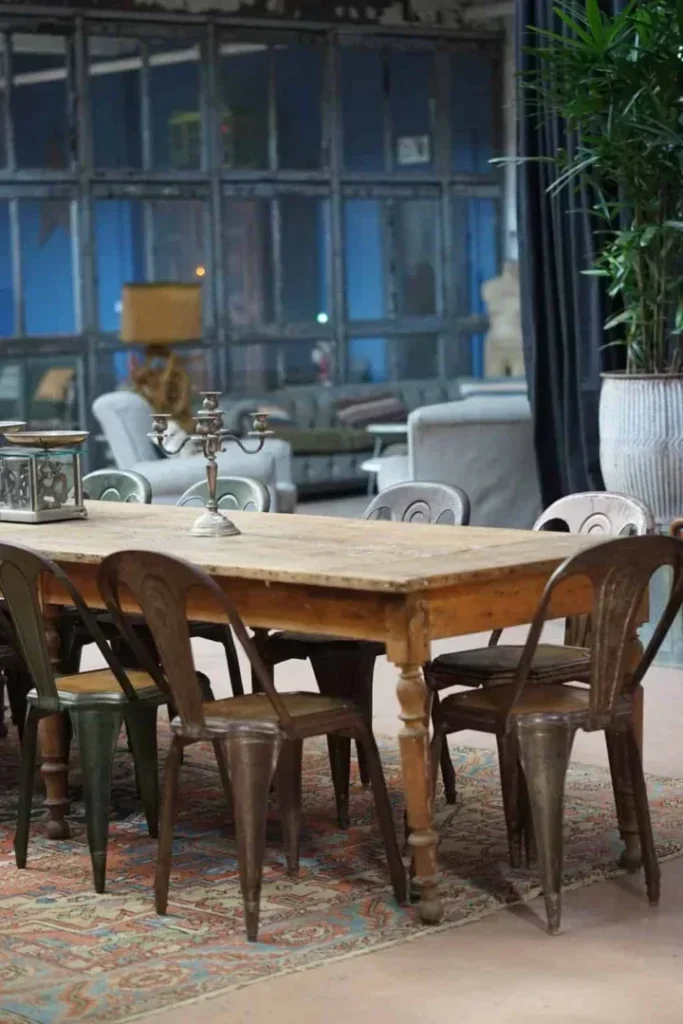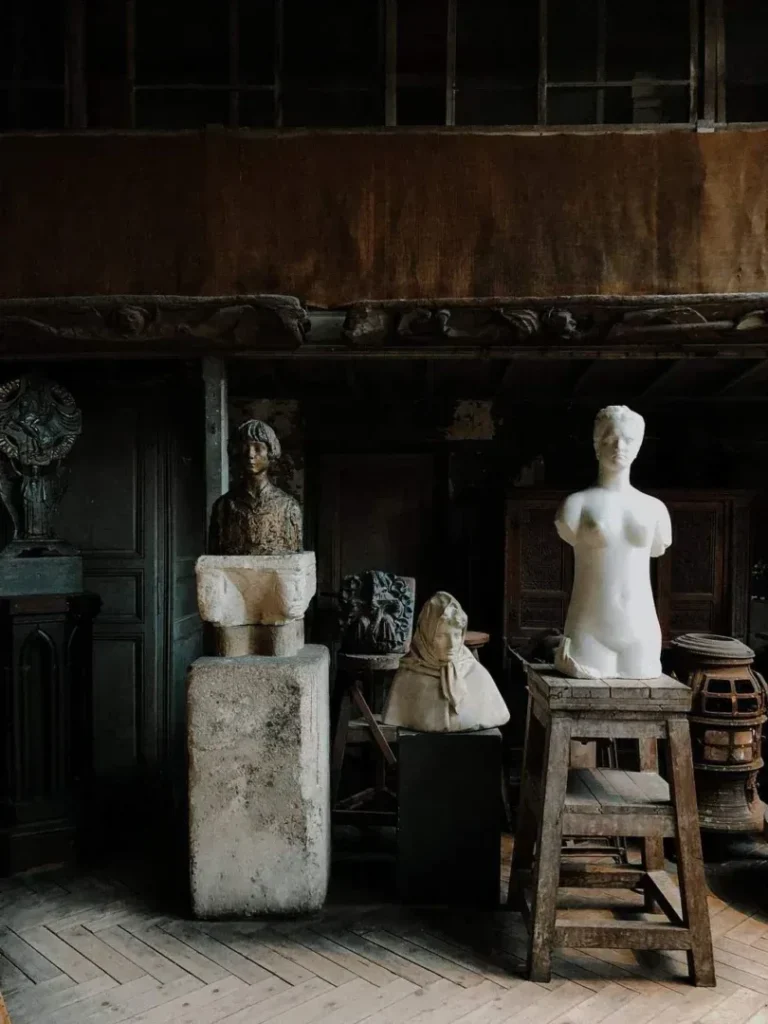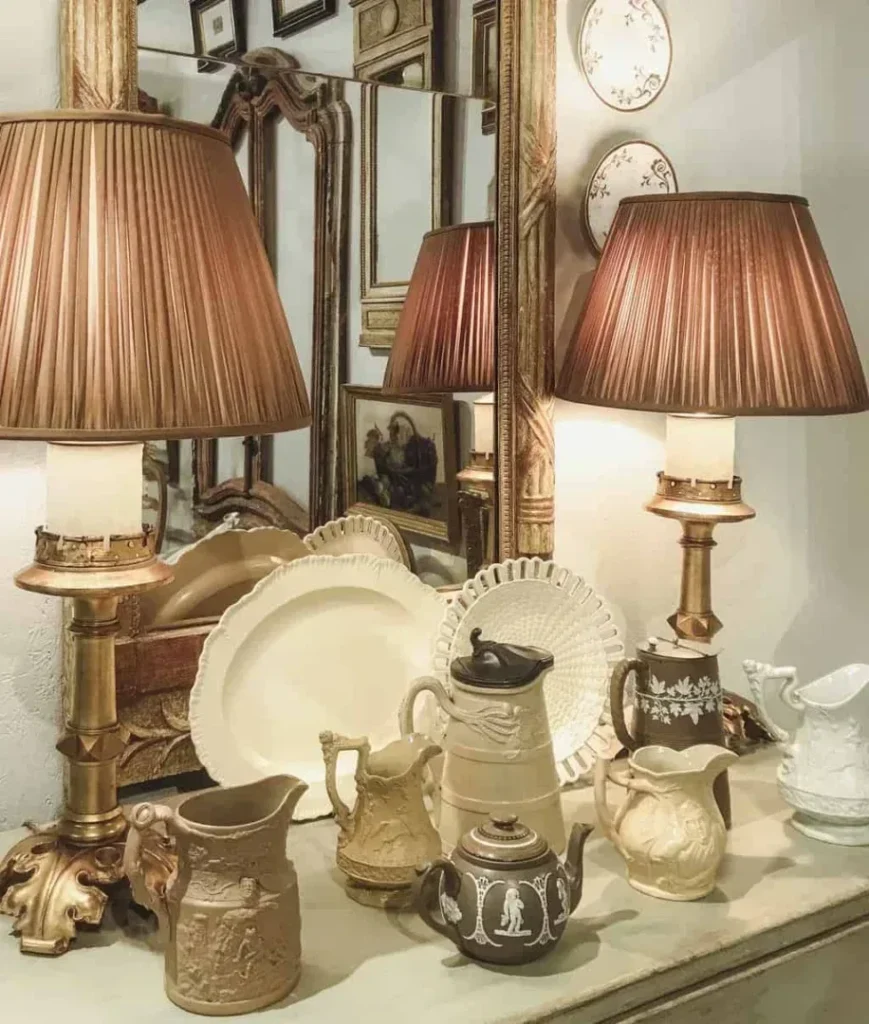So you stumble upon an old item that you found in your grandparent’s attic, and you can’t help but wonder if it qualifies as an antique or vintage. After all, there is a certain charm and allure that comes with owning something from the past. But where does the line between antique and vintage actually lie? Is it determined by age, value, or some other elusive factor? Well, when it comes to the question of whether an item that is 50 years old is considered antique or vintage, the answer might not be as straightforward as you think.

This image is property of images.unsplash.com.
Understanding the Concepts: Antique and Vintage
Definition of Antique
When it comes to categorizing items, the term “antique” typically refers to objects that are at least 100 years old. These items are considered to be valuable due to their age, historical significance, and craftsmanship. Antiques are often highly sought after by collectors and enthusiasts who appreciate the beauty and artistry of the past.
Definition of Vintage
On the other hand, the term “vintage” is used to describe items that are at least 20 years old but less than 100 years old. These items are often associated with a particular era or time period, evoking a sense of nostalgia and capturing the essence of a bygone era. Vintage items are valued for their uniqueness, style, and representation of a specific period in history.
The Differences Between Antique and Vintage
While both antique and vintage items are valued for their age and historical connections, there are some key differences between the two. The main distinction lies in the age of the items – antique items are generally older than vintage items. Antiques also tend to have a higher level of craftsmanship and quality, reflecting the skills and techniques of previous generations. Vintage items, on the other hand, are often more accessible and affordable for collectors, making them a popular choice for those looking to start their own collection or add a touch of nostalgia to their home.
The Legal Definitions of Antique and Vintage
The U.S. Customs Definition
In the United States, the Customs and Border Protection agency defines an antique as an item that is at least 100 years old. This definition aligns with the traditional understanding of antiques in terms of their age. Vintage items, on the other hand, are not specifically defined by U.S. Customs, but are generally recognized as items that are at least 20 years old.
The UK and EU Definitions
In the United Kingdom and the European Union, the legal definitions of antique and vintage differ slightly. According to UK law, an antique is an item that is at least 100 years old, similar to the definition used in the United States. Vintage items, however, are referred to as “retro” and are typically described as items from the 1920s to the 1980s. The EU provides a broader definition of vintage, categorizing items as such if they were produced at least 20 years ago.
Implications of These Definitions
The legal definitions of antique and vintage have certain implications for collectors, sellers, and importers. For collectors, understanding these definitions can help determine the age and value of the items they are acquiring. Sellers can use these classifications to appropriately label and market their products, ensuring transparency and accuracy for potential buyers. Importers must also take these definitions into consideration when bringing items across borders, as different countries may have varying regulations and restrictions based on the age and categorization of the items.
Is 50-Year-Old Item Antique or Vintage?
The Age Factor: Crucial but not Sole Determinant
When considering whether a 50-year-old item should be classified as antique or vintage, the age of the item is undoubtedly a crucial factor. However, age alone does not necessarily determine its classification. While antique items are generally older, it is important to consider other elements such as the origin, material, and overall condition of the item to make an accurate classification.
Role of the Origin and Material
The origin and material of an item can provide valuable insights into its historical significance and craftsmanship. Items that were produced in a specific region known for its traditional craftsmanship or using exceptional materials may hold greater value and be considered antique, even if they are not yet 100 years old. Similarly, items made from rare or highly sought-after materials may be regarded as antique due to their scarcity and desirability in the market.
How Well Was it Preserved?
The condition of the item is also an important factor in determining whether it should be classified as antique or vintage. Antiques are often prized for their originality and authenticity, so items that have been well-preserved and maintained over the years are more likely to be considered antique. Vintage items, on the other hand, may show signs of wear or use, which can add to their charm and authenticity.
Parameters Deciding Antique or Vintage Classification
The Age of the Item
As previously discussed, age plays a significant role in distinguishing between antique and vintage items. While the specific age requirements may vary depending on the legal definition, the general guideline is that items over 100 years old are considered antique, while those between 20 and 100 years old are considered vintage.
The Condition of the Item
The condition of the item is another important factor to consider. Antiques are typically expected to be in good condition, reflecting their age and historical significance. Vintage items, on the other hand, may show signs of wear or use, adding character and authenticity.
The Rarity of the Item
The rarity of an item can greatly impact its classification as antique or vintage. Antiques are often valued for their scarcity and uniqueness, as they become increasingly rare over time. Vintage items, while not as rare as antiques, can still hold value if they are associated with a specific era, designer, or limited production.
The Demand of the Item
The demand for an item within the collector’s market can influence its classification. Antiques that are highly sought after by collectors and enthusiasts may hold a higher value and be more likely to be classified as such. Vintage items may also have a dedicated following, but their value is often more dependent on personal taste and nostalgia rather than widespread demand.

This image is property of images.unsplash.com.
Historical Significance and Cultural Value
Importance in the Antiquity Scale
Antique items are deeply intertwined with history, serving as tangible artifacts that connect us to the past. They offer a glimpse into the craftsmanship, lifestyle, and culture of previous generations, providing valuable insights into our collective history. Vintage items, while not as old, still retain historical significance and can evoke a strong feeling of nostalgia, reminding us of specific moments in time.
Connection to Historical Incidents and Personalities
Antique and vintage items can also be linked to specific historical incidents or personalities. An antique firearm used in a significant battle or a vintage dress worn by a famous actress can carry immense historical and cultural value. These connections to notable events and individuals can greatly enhance the significance and appeal of such items.
Preservation of Cultural Essence over Years
Antiques and vintage items often embody the cultural essence and artistic styles of their respective time periods. They allow us to appreciate the craftsmanship, materials, and artistic techniques that were prevalent during specific eras. By preserving these items, we ensure that future generations can continue to appreciate and learn from the cultural heritage and artistic traditions of the past.
Antiques, Vintage & Collectibles
Definition of Collectibles
In addition to antiques and vintage items, the category of collectibles encompasses a broader range of objects sought after by collectors. Collectibles can include items such as coins, stamps, sports memorabilia, comic books, and more. These items may not necessarily meet the age requirements to be considered antique or vintage but are valued for their rarity, desirability, and collectability.
Distinction between Antiques, Vintage, and Collectibles
While antiques, vintage items, and collectibles are all coveted by collectors, there are distinctions between these categories. Antiques are typically older and hold historical and cultural significance. Vintage items are associated with a particular era and evoke nostalgia. Collectibles, on the other hand, are often sought after for their rarity and desirability, regardless of their age or historical context.
An Overlap between the Categories
It is worth noting that there can be overlap between these categories. An item can be both antique and collectible if it meets the age requirements and holds unique value within a specific collector’s market. Similarly, vintage items can also fall into the collectible category if they are highly sought after by collectors. The important thing to remember is that these categories serve as guides to help collectors and enthusiasts navigate the world of valuable and desired items.

This image is property of images.unsplash.com.
Economic Value and Market Trends
Market Value of Antiques vs. Vintage
The market value of antiques and vintage items can vary greatly based on factors such as rarity, condition, demand, and historical significance. Antiques, being older and often associated with higher craftsmanship, tend to hold greater value in the market. However, certain vintage items can also command a high price due to their association with a specific era or designer.
Effect of Fake Reproductions on the Market
As with any collectible market, the presence of fake reproductions can impact the value and marketability of both antiques and vintage items. The market for antiques, in particular, has been plagued by reproductions attempting to mimic the craftsmanship and authenticity of genuine antique items. This makes it crucial for collectors and buyers to be knowledgeable and discerning when making purchases to avoid being misled by fraudulent reproductions.
Future Market Trends
The market for antiques and vintage items is dynamic and constantly influenced by changing tastes and trends. While antiques have traditionally held a prominent place in collector’s markets, there has been a surge in interest and demand for vintage items in recent years. As new generations enter the collectibles market, preferences and trends may shift, resulting in changes in market value and desirability.
Aesthetic Qualities: Antique vs Vintage
Visual Appeal of Antiques
Antiques often exhibit a timeless beauty and elegance that can enhance any space. Their craftsmanship, attention to detail, and use of high-quality materials create a sense of luxury and sophistication. Whether it’s an intricately carved wooden furniture piece or a delicate porcelain vase, antiques have a unique ability to elevate the aesthetic of a room, adding character and depth.
Styles Represented in Vintage Items
Vintage items, on the other hand, offer a wide range of styles that reflect the design trends of specific eras. Whether it’s the Art Deco elegance of the 1920s or the bright colors and bold patterns of the 1970s, vintage items can bring a sense of nostalgia and personality to a space. They allow individuals to express their individual style and create a unique environment that reflects their personal taste.
Choosing Between Antique and Vintage for Decoration
When it comes to choosing between antique and vintage items for decoration, there are no hard and fast rules. It ultimately comes down to personal preference and the desired aesthetic. Antiques can add a touch of history and grandeur to a space, while vintage items can create a more playful and eclectic atmosphere. Mixing and matching pieces from different eras can also result in a visually interesting and dynamic interior design.
Resale Value: Antique and Vintage
Resale Potential for Antiques
Antiques generally have a strong resale potential due to their age, craftsmanship, and historical significance. Collectors and enthusiasts are often willing to pay a premium for authentic and well-preserved antique items. However, the resale value of antiques can fluctuate based on market trends, demand, and the rarity of the item.
Resale Potential for Vintage Items
Vintage items also have resale potential, although it may not be as high as that of antiques. The value of vintage items is often driven by the desirability of the era they represent, the popularity of certain designers or brands, and the overall condition of the item. Vintage clothing, for example, can be highly sought after by fashion enthusiasts and collectors, often commanding high prices in the resale market.
Optimal Reselling Techniques
To maximize the resale value of both antiques and vintage items, it is important to consider several factors. These include accurately identifying and documenting the item’s age, origin, and condition, as well as conducting research to determine its market value. Properly preserving and maintaining the item’s integrity can also help retain its value over time. Additionally, working with reputable dealers, auction houses, or online marketplaces can provide a wider audience and opportunities for selling.
Closing Words: Labels Matter Less
The Significance Beyond the Labels
While the labels of antique and vintage serve as helpful guidelines in categorizing and understanding objects, their significance goes beyond mere definitions. The true value of these items lies in their ability to connect us to the past and evoke emotions, memories, and appreciation for craftsmanship. Whether it’s a 50-year-old item classified as vintage or antique, its historical and cultural significance transcends the labels.
Personal Satisfaction vs. Market Value
Ultimately, the decision to classify a 50-year-old item as antique or vintage should not solely be based on market value or categorization. It is important to consider personal satisfaction and appreciation for the item’s history, aesthetics, and craftsmanship. Collecting and preserving these items can be a fulfilling and enriching experience, regardless of their label or monetary worth.
50-year-old – Antique, Vintage, or Both?
When it comes to determining whether a 50-year-old item should be classified as antique, vintage, or both, it depends on various factors. The age of 50 years falls within the vintage category, but if the item exhibits exceptional craftsmanship or represents a significant era, it may also be considered antique. Ultimately, the classification can be subjective and may vary based on personal opinions, cultural trends, and market dynamics. What truly matters is the appreciation and enjoyment derived from owning and cherishing these pieces of history.
